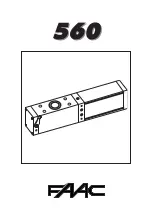
Installation and Maintenance Manual
33
Detector Loop Installation Guide
Detector Basics
The vehicle detector passes a small current flow through the “loop” which then becomes an inductive
coil. When a vehicle passes over a loop the detector senses the resultant drop in the inductance, and
actuates the detector output.
Loop Configurations
Configurations differ depending on the application. In parking applications with the HTG 320 operator, a
loop may be as small as 3’ x 6’. In other applications, specifically if high bed trucks must be sensed, the
smallest loop should not be less than six feet square.
Rules to Follow for Security Gate Applications
1. The loop closest to the arm shall be centered directly under the barrier arm.
2. The shortest side of the loop shall be between four (3) and eight (8) feet in length. The longest side of
the loop shall be between six (6) and twenty (20) feet in length. For applications that need to span a
wide area, use several smaller loops. Do not exceed a maximum of 200 square feet of loop area to
only one detector.
3. In applications with multiple loops, keep each loop at least six feet apart. This avoids “cross talk”. It
is possible to have loops closer together by selecting different frequencies. An advantage of using
Hy-Security model HY-5A detectors is that problematic “cross talk” is not possible.
4. To avoid interference, keep loops at least two (2) inches above any reinforcing steel. Do not route
loop wires with, or in close proximity to, any other conductors, including other loop leads, unless
shielded lead-in cable is used. Never route high voltage circuits in PVC conduit near a loop.
5. Loop and lead-in wire should be one continuous piece. Avoid splices, if possible. If a splice is
necessary for any reason, “pot” the splice in epoxy or use heat shrink to ensure that the quality of the
splice covering is the same as the original wire jacket.
6. Use only number 14, 16, or 18 gauge stranded wire with a direct burial jacket. Cross linked
polyethylene insulation types, such as, XLPE or XHHW, will last much longer and are less prone to
damage during installation than conventional insulation types. Preformed loops can be used before
road surfacing or under pavers.
7. Twist loose tails of lead-in wires tightly, approximately ten times per foot.
Содержание HTG 320-2
Страница 16: ...Installation and Maintenance Manual 10 Components of the Barrier Arm Gate Operator ...
Страница 19: ...Installation and Maintenance Manual 13 ...
Страница 20: ...Installation and Maintenance Manual 14 ...
Страница 21: ...Installation and Maintenance Manual 15 ...
Страница 25: ...Installation and Maintenance Manual 19 ...
Страница 41: ...Installation and Maintenance Manual 35 E95 ...
Страница 54: ...Installation and Maintenance Manual 48 ...
Страница 55: ...Installation and Maintenance Manual 49 ...
Страница 57: ...Installation and Maintenance Manual 51 ...
Страница 58: ...Installation and Maintenance Manual 52 Parts Breakout ...
Страница 59: ...Installation and Maintenance Manual 53 Parts Breakout ...
Страница 60: ...Installation and Maintenance Manual 54 Parts Breakout ...
Страница 61: ...Installation and Maintenance Manual 55 Parts Breakout ...
Страница 62: ...Installation and Maintenance Manual 56 Parts Breakout ...
Страница 63: ...Installation and Maintenance Manual 57 Parts Breakout ...
Страница 64: ...Installation and Maintenance Manual 58 Parts Breakout DC Power Supply Battery Pack Components ...
















































